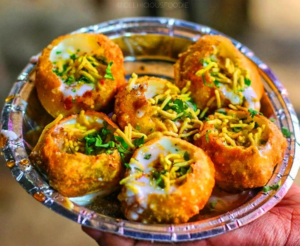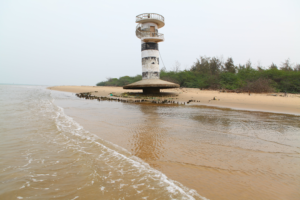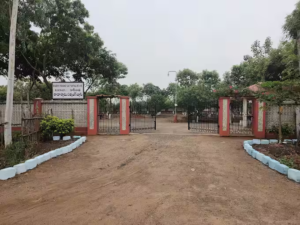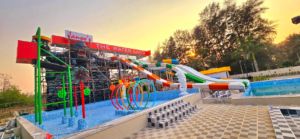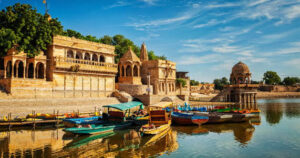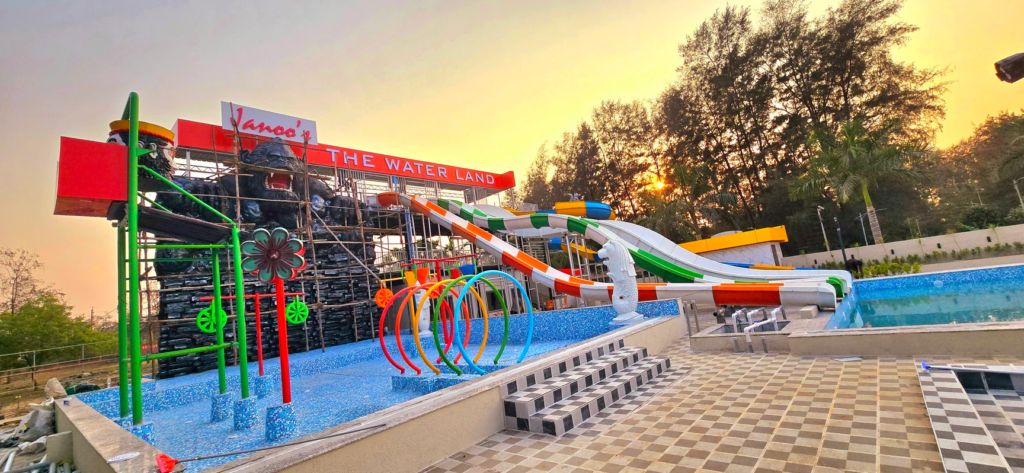Rajasthan, the land of kings, is home to some of India’s most magnificent palaces and forts. These architectural marvels stand as testament to the opulence, power, and artistic vision of the Rajput rulers who once governed this region. From imposing hilltop fortresses to intricate palace complexes, each structure tells a unique story of valor, romance, and royal life. Join us on a journey through Rajasthan’s most spectacular palaces and forts, where you can experience the grandeur of a bygone era.
- Amber Fort, Jaipur
Our royal tour begins with the magnificent Amber Fort, located about 11 kilometers from Jaipur. This UNESCO World Heritage site is a perfect blend of Hindu and Mughal architecture. Built in the 16th century by Raja Man Singh I, the fort is constructed of red sandstone and marble.
As you approach the fort, you’ll be struck by its imposing facade rising from the rugged hills. The traditional way to enter is by elephant ride, adding to the royal experience. Once inside, you’ll be dazzled by the intricate carvings, mirror work, and painted ceilings.
Key attractions within the fort include:
- Diwan-i-Aam (Hall of Public Audience): An open-air pavilion where the king would meet common people and hear their grievances.
- Sheesh Mahal (Palace of Mirrors): A stunning chamber where walls and ceilings are adorned with intricate mirror work. A single candle can illuminate the entire room, creating a magical effect.
- Sukh Niwas (Hall of Pleasure): This chamber has an innovative air cooling system created by having water cascade over a carved marble cascade.
The Amber Fort also offers panoramic views of Maota Lake and the surrounding Aravalli hills. The sound and light show in the evening brings the fort’s history to life in a spectacular manner.
- City Palace, Udaipur
Udaipur’s City Palace, stretching along the eastern shore of Lake Pichola, is a massive complex of several palaces built over a period of nearly 400 years. Started by Maharana Udai Singh II in 1553, it was continually expanded by his successors.
The palace is a fusion of Rajasthani and Mughal architectural styles, with its facade adorned with intricate mirror-work, marble work, murals, and silver work. As you enter through the Tripolia Gate, you’re greeted by a series of courtyards, terraces, corridors, and gardens.
Notable features include:
- Mor Chowk (Peacock Square): Famous for its beautiful mosaics of peacocks, representing the three seasons of summer, winter, and monsoon.
- Dilkhush Mahal (Palace of Joy): Adorned with frescoes and colorful glass windows.
- Sheesh Mahal: Similar to its namesake in Amber Fort, this hall is decorated with glittering mirror work.
- Crystal Gallery: Houses a rare collection of Osler’s crystal ordered from England in 1877.
The City Palace Museum showcases a rich collection of artifacts, giving visitors a glimpse into the opulent lifestyle of Rajasthan’s royalty. The panoramic view of Udaipur city and its lakes from the palace’s upper terraces is breathtaking.
- Mehrangarh Fort, Jodhpur
Perched 400 feet above Jodhpur’s skyline, Mehrangarh Fort is one of the largest forts in India. Built around 1460 by Rao Jodha, the fort has been the home of the Rathore dynasty ever since. Its sheer size and robust structure have led to it being called “the work of giants” by Rudyard Kipling.
As you approach the fort, you’ll notice its imposing red sandstone exterior with walls up to 118 feet high and 69 feet wide. The fort is accessed through a series of seven gates, each with its own significance. The most famous is Loha Pol (Iron Gate), which still bears the handprints of the queens who committed sati (self-immolation) upon their husbands’ funeral pyres.
Inside, the fort houses several palaces known for their intricate carvings and expansive courtyards. Key attractions include:
- Moti Mahal (Pearl Palace): The hall where the royal throne of Jodhpur is kept.
- Phool Mahal (Flower Palace): The most opulent of all the halls, used for private audiences.
- Sheesh Mahal: Another spectacular hall adorned with mirrors.
The fort’s museum is a treasure trove of palanquins, howdahs (elephant seats), royal cradles, miniatures, musical instruments, and furniture. The view of the blue-hued city of Jodhpur from the fort’s ramparts is simply unforgettable.
- Jaisalmer Fort, Jaisalmer
Unlike most forts in Rajasthan, Jaisalmer Fort is a living fort, with about a quarter of the city’s population still residing within its walls. Built in 1156 AD by the Rajput ruler Rawal Jaisal, it rises from the sandy expanse of the Thar Desert like a mirage.
The fort’s golden sandstone walls change color dramatically from tawny lion color during the day to honey-gold as the sun sets, giving Jaisalmer its nickname, “The Golden City”. The fort’s intricate architecture is a fine example of the Rajputana style, blended with influences from Islamic and Jain styles.
Inside the fort, you’ll find yourself in a maze of narrow lanes lined with houses, temples, and havelis. Key attractions include:
- Raj Mahal (Royal Palace): The former residence of the Maharawal of Jaisalmer.
- Jain Temples: A series of seven beautifully carved Jain temples dating from the 12th to the 16th centuries.
- Laxminath Temple: Dedicated to the Hindu gods Vishnu and Lakshmi.
The fort offers stunning views of the surrounding desert landscape. However, it’s worth noting that the fort faces challenges due to water seepage and tourism pressure, so responsible tourism is crucial here.
- Chittorgarh Fort, Chittorgarh
Chittorgarh Fort, sprawling over a hill 180 meters high, is one of the largest forts in India and a UNESCO World Heritage site. Built in the 7th century, it has a dramatic history filled with sieges and battles, symbolizing Rajput pride and valor.
The fort complex covers 700 acres and houses several palaces, temples, and towers. As you explore, you’ll come across:
- Vijay Stambh (Tower of Victory): A nine-story tower built to commemorate Rana Kumbha’s victory over the rulers of Malwa and Gujarat.
- Kirti Stambh (Tower of Fame): A 22-meter-high tower dedicated to Adinath, the first Jain Tirthankara.
- Rana Kumbha Palace: One of the most massive monuments in the fort complex.
- Padmini Palace: Associated with the legendary tale of Queen Padmini.
The fort has witnessed three major sieges in its history, each followed by the practice of jauhar (mass self-immolation) by Rajput women and men. These tales of sacrifice and valor are an integral part of Rajasthan’s folklore.
- Junagarh Fort, Bikaner
Unlike most of Rajasthan’s forts built on hilltops, Junagarh Fort stands on the desert plains of Bikaner. Constructed between 1588 and 1593 by Raja Rai Singh, a general in Akbar’s army, the fort has remained unconquered to this day.
The fort’s red sandstone exterior belies the opulence within. It houses several palaces, temples, and pavilions constructed in various architectural styles. Notable among these are:
- Anup Mahal: Serving as the Diwan-i-Khas (Hall of Private Audience), it’s known for its intricate golden leaf painting.
- Chandra Mahal (Moon Palace): Features beautiful mirror work and painted ceilings.
- Phool Mahal (Flower Palace): Decorated with floral motifs in red and gold.
The fort’s museum displays an impressive collection of carpets, royal costumes, and jewelry. The armory section houses a fascinating collection of weapons.
- Umaid Bhawan Palace, Jodhpur
One of the world’s largest private residences, Umaid Bhawan Palace was built between 1929 and 1943. Named after Maharaja Umaid Singh, it was originally constructed to provide employment to thousands of people during a time of severe drought.
The palace is a stunning blend of Indo-Saracenic, Classical Revival, and Western Art Deco styles. Built entirely out of interlocking blocks of sandstone, the palace doesn’t use mortar binding. It’s divided into three functional parts – the royal family’s residence, a luxury hotel, and a museum focusing on the 20th-century history of the Jodhpur royal family.
Even if you’re not staying at the hotel, you can visit the museum to admire the art deco interiors, vintage cars, clocks, and trophies. The view of Jodhpur from the palace grounds is spectacular.
- Lake Palace, Udaipur
Perhaps one of the most romantic palaces in the world, the Lake Palace seems to float on the calm waters of Lake Pichola. Built in 1746 as a summer palace by Maharana Jagat Singh II, it’s now a luxury hotel that has hosted royalty, celebrities, and discerning travelers from around the world.
The palace is made of white marble and covers the entire 4-acre island of Jag Niwas. Its courtyards are lined with columns, pillared terraces, fountains, and gardens. While the interior is only accessible to hotel guests, even viewing it from the banks of Lake Pichola or during a boat ride is a magical experience.
- Hawa Mahal, Jaipur
Although not a traditional palace or fort, no list of Rajasthan’s royal architecture would be complete without mentioning the Hawa Mahal or “Palace of Winds”. Built in 1799 by Maharaja Sawai Pratap Singh, this five-story palace is essentially a high screen wall designed to allow royal ladies to observe street festivities while unseen from the outside.
The facade, which resembles a honeycomb of a beehive, has 953 small windows decorated with intricate latticework. The original intention of the lattice design was to allow royal ladies to observe everyday life and festivals celebrated in the street below without being seen, since they had to obey the strict rules of “purdah”, which forbade them from appearing in public without face coverings.
This architectural feature also allowed cool air from the Venturi effect to pass through, making the whole area more pleasant during the high heat of summer. The Hawa Mahal is a beautiful example of Rajput architecture and an iconic symbol of Jaipur.
- Rambagh Palace, Jaipur
Originally built in 1835, Rambagh Palace has a history as colorful as the city of Jaipur itself. It began as a modest garden house and was later converted into a royal hunting lodge. In the early 20th century, it was expanded into a palace and became the residence of the Maharaja of Jaipur.
Today, Rambagh Palace is a luxury hotel that allows visitors to experience the lavish lifestyle of Indian royalty. The palace grounds span 47 acres and include elaborately decorated rooms and halls, beautiful gardens, and vintage cars. Even if you’re not staying at the hotel, you can visit for a meal or afternoon tea to soak in the regal atmosphere.
Exploring these palaces and forts of Rajasthan is like stepping back in time to an era of unparalleled opulence and grandeur. Each structure tells a unique story of the region’s rich history, architectural prowess, and cultural heritage. From the imposing Mehrangarh Fort to the romantic Lake Palace, from the intricate carvings of Amber Fort to the art deco interiors of Umaid Bhawan, Rajasthan’s royal buildings offer a diverse range of experiences.
As you wander through grand halls, climb winding staircases, and gaze out over desert landscapes or shimmering lakes, you’ll gain a deeper appreciation for the vision and artistry of Rajasthan’s rulers and craftsmen. These palaces and forts are not just silent witnesses to history; they are living monuments that continue to inspire and amaze visitors from around the world.
Whether you’re a history buff, an architecture enthusiast, or simply someone who appreciates beauty and craftsmanship, the palaces and forts of Rajasthan promise an unforgettable journey into India’s royal past. So pack your bags, put on your walking shoes, and prepare to be dazzled by the magnificent heritage of Rajasthan!

